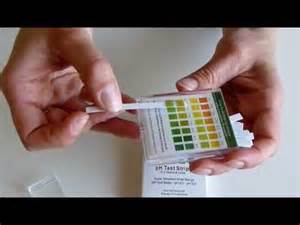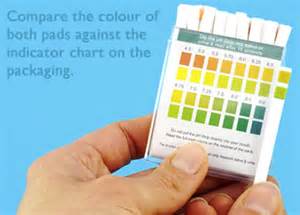If you ask most people what their pH level is most likely they won’t know the answer to this question, and a few might not know what you’re talking about. But knowing your pH level is critically important and may give you some insights into why you are chronically tired, have weight issues, joint pain and other health issues. The big advantage to pH testing is its very inexpensive, easily done at home, and has the benefit of immediate results.
pH Basics
The term pH stands for the potential of hydrogen. pH measures the amount of hydrogen ions in a particular solution. The higher the amounts of ions present the higher the acidity level. The fewer the ions that are present, the more alkaline the solution is. So pH is a measure of acidity or alkalinity on a scale of zero to fourteen. Zero represents the most acidic end of the scale and fourteen represents the highest alkaline end of the scale. Seven is the neutral mid-range point.

How to Test Your Urine pH Levels
Measuring urine pH is relatively simple. You will need pH strips which are readily available in drugstores, pharmacies and online. The strips have properties which allow them to change color when they come in contact with an alkaline or acidic substance. The easiest method for testing consists of placing the stick in the flow of urine for one or two seconds. The acidity or alkalinity of the urine will change the color of the stick. You then match the stick to a color chart that comes with the strips. Results can vary based on numerous factors such as time of day, and diet. In order to obtain an average reading of your pH, consider testing three times a day for 5 days. A common schedule for testing is the second urine release of the morning, before lunch and before dinner. The reason for testing before meals is that your food intake can temporarily alter the results.
How to Test Your Saliva pH levels
Measuring your saliva pH is also very easy. Simply spit into a clean container and dip the test strip, into the saliva. Let it sit for one or two seconds, the acidity or alkalinity of your saliva will change the color on the test strip. Match the color of the strip with the color chart that came with the strips. As with urine testing the results can vary based on time of day and foods you’ve eaten. Be sure to wait an hour or two after brushing your teeth for testing your saliva and also wait 30 minutes after eating to test. In order to obtain a more accurate average reading, considers testing three times a day for 5 days. A common schedule for testing is the one to two hours after brushing your teeth, before lunch and before dinner. The reason for testing before meals is that your food intake can temporarily alter the results.
What is Normal pH range of Saliva and Urine?
Normal urine pH averages 6.5-7.25 -This is considered a normal range and is indicative of a good acid-alkaline balance.
Normal saliva range is between 7.0-7.5- A saliva test that reads below 7.0 shows a depleted mineral reserve. This low reading is an indication that mineral reserves are low and are being used to buffer acids elsewhere in your body. Normal mineral reserves will show up as a 7.0-7.50 on a pH test.

neutral at 7
too acidic at 6.5 and under
too alkaline at 7.5 and above
Health Risks of Being Over-Acidic
Most people with unbalanced pH are acidic. When the body is over acidic, the body takes minerals from vital organs and bones to neutralize the acid and remove it from the body. Because of this the body’s mineral reserves such as calcium, sodium , potassium and magnesium can run dangerously low and cause damage that can go undetected for years, until it reaches dangerous levels.
•Mild acidosis can cause problems such as:
•Inflames sensitive gums, cavities
•Immune deficiency
•Sciatica, lumbago, stiff neck
•Respiratory problems, shortness of breath, coughing
•Yeast fungal overgrowth
•Low energy and chronic fatigue
•Cardiovascular damage, including the constriction of blood vessels and reduction in oxygen
•Heart problems, arrhythmias, increased heart rate
•Weight gain, obesity and diabetes
•Bladder and kidney infections
•Accelerated free radical damage
•Premature aging
•Nausea, vomiting, diarrhea
•Osteoporosis, weak brittle bones, hip fractures, bone spurs
•Headaches, confusion, sleepiness
•Joint pain, aching muscles and lactic acid buildup
•Allergies, acne
If your pH results are too acidic or too alkaline discuss your nutritional and supplemental options with your healthcare practitioner.
These are the test strips I use:
References:
The Acid-Alkaline Diet for Optimum Health by Christopher Vassey N.D.
Alkalize or Die by Theodore A. Baroody, N.D., D.C., Ph.D.








